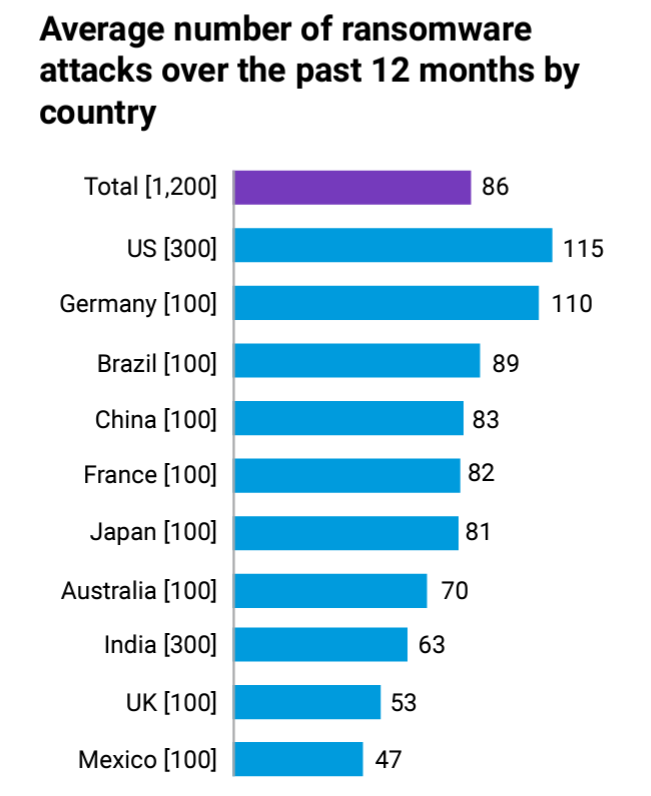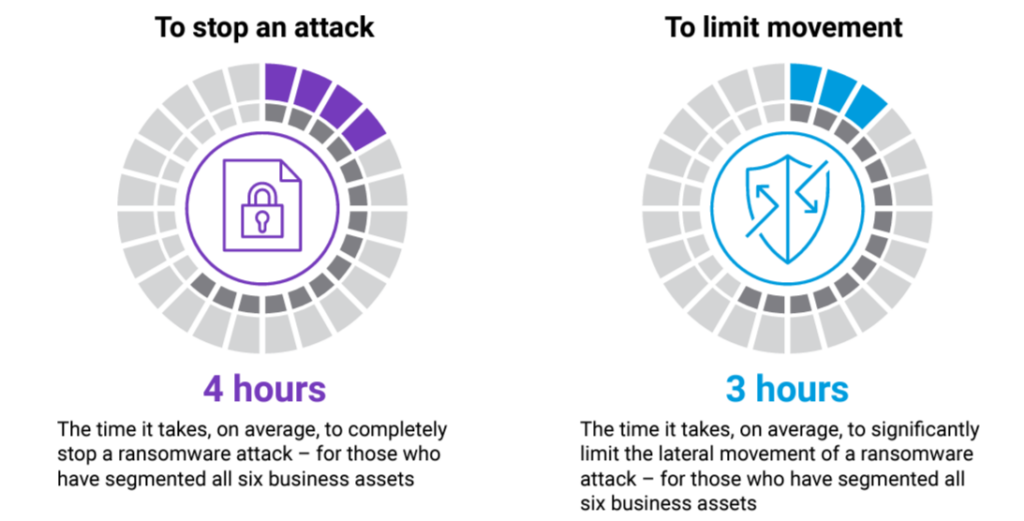
What is network segmentation? (Source – Shutterstock)
What is network segmentation, and why is it vital in APJ organizations?
- Network segmentation is key in fighting cyberthreats and speeding up ransomware recovery.
- Rising ransomware attacks prompt a shift towards microsegmentation and zero-trust security.
- Microsegmentation enhances network management and compliance, boosting security and efficiency.
Navigating IT security’s increasingly complex challenges has become more demanding as attackers grow sophisticated, combining techniques to create frequent threats. This complexity places immense pressure on security teams, especially since an online presence is vital for businesses, and a single successful breach can cause significant, sometimes irreversible, damage to reputation and revenue.
Persistence in deploying security strategies can yield remarkable results. Segmentation, especially of critical assets, has proven to be a game-changer in defense. Organizations that have effectively segmented critical assets can contain and mitigate ransomware attacks 11 hours faster than those with minimal segmentation, crucially protecting customers, brand reputation, and revenue streams.
Network segmentation, a strategic approach, divides a network into multiple smaller segments or subnets. Each subnet functions independently, allowing administrators to control network traffic between them. Organizations use this technique to enhance monitoring, improve performance, localize technical issues, and strengthen security.
Network segmentation provides security personnel with a robust tool to prevent unauthorized access to sensitive customer data, corporate financial records, and confidential intellectual property. Given software-defined networking’s advent, these assets, often spread across various environments, require robust protection against attacks and breaches. Understanding network segmentation’s security implications requires considering the concept of trust in network security.
The evolving threat landscape with ransomware
A recent report addressing the escalating ransomware issue emphasizes the increase in incidents, the adoption of zero-trust frameworks, and microsegmentation’s advantages. While segmentation is beneficial, microsegmentation offers a more granular approach by dividing the network at the individual workload level, enhancing the network’s overall security.
The State of Segmentation 2023 report by Akamai shows organizations globally experienced an average of 86 ransomware attacks last year, up from 43. In the Asia-Pacific-Japan (APJ) region, China and Japan reported the highest numbers, experiencing 83 and 81 attacks, respectively.

Average number of ransomware attacks over the past 12 months by country. (Source – Akamai)
Post-ransomware attack impacts include network downtime (52%), data loss (46%), and brand reputation damage (45%). In response, security organizations increasingly adopt zero trust and microsegmentation strategies, with nearly all respondents in the APJ region deploying a zero-trust security framework alongside segmentation.
Based on insights from 1,200 IT and security decision-makers, the report shows a regional variation in segmentation’s perceived importance. In the APAC and Americas, 62% and 60% of IT security teams and decision-makers, respectively, consider it crucial to security, compared to 53% in the EMEA region. India leads in segmentation efforts, followed by Mexico and Japan.
Despite recognizing segmentation’s importance, its deployment in the APJ region is lower than expected, with only 36% of organizations segmenting more than two business-critical areas. The primary obstacle in APJ is the lack of skills and expertise (43%), followed by compliance requirements (42%) and performance bottlenecks (40%).
Organizations implementing microsegmentation across six mission-critical areas reported recovering from attacks in an average of four hours. This recovery time is 11 hours faster than organizations that have implemented segmentation across only one critical area, thereby underscoring the effectiveness of a zero-trust strategy incorporating microsegmentation.
Microsegmentation: advancing network segmentation for greater security
Let’s delve further into microsegmentation and explore its importance.
Microsegmentation significantly streamlines the deployment process in network management by introducing several key innovations. It starts by creating an interactive visual representation of all the connections within an environment, which is crucial for overcoming the primary challenges of deployment. This visualization offers a clear understanding of the network’s layout, simplifying the identification of critical areas that need segmentation.
One of the notable aspects of microsegmentation is its ability to address performance bottlenecks. These bottlenecks often stem not from the technical strain on the system but from the labor-intensive process of manually segmenting business areas and troubleshooting them. By reducing the need for manual segmentation, microsegmentation alleviates the burden on the workforce, particularly in environments lacking segmentation expertise.
Microsegmentation also offers robust technical support and professional services throughout deployment, ensuring that each organization’s unique IT requirements are met. AI-powered policy recommendations and ready-to-use policy templates for common scenarios further facilitate the deployment. This approach streamlines the workflow, minimizes the time required to establish policies, and reduces the risk of errors due to manual configurations.
An example of the efficiency and cost-effectiveness of microsegmentation is seen in how a project, initially projected to take two years and cost over a million dollars, was completed in just six weeks with minimal staffing, cutting the total project cost by a significant margin.

Akami shows why segmenting can hugely reduces risk. (Source – Akamai)
How microsegmentation eases compliance
In terms of compliance, microsegmentation is particularly effective for organizations needing to adhere to various regulatory standards such as PCI-DSS, SWIFT, Sarbanes-Oxley, HIPAA, and GDPR. These regulations often necessitate separating sensitive data from other systems, a task that traditional methods like firewalls and VLANs find restrictive.
Microsegmentation allows for creating specific segments for sensitive data, controlling what can access that data. Visual maps offering near real-time and historical perspectives let organizations demonstrate compliance effectively. These maps show that unauthorized personnel or systems do not access protected data, providing tangible evidence of adherence to compliance mandates.
Through these features, microsegmentation not only simplifies deployment by reducing manual effort and enhancing efficiency, but also ensures that organizations can meet stringent compliance requirements more efficiently and accurately.
READ MORE
- 3 Steps to Successfully Automate Copilot for Microsoft 365 Implementation
- Trustworthy AI – the Promise of Enterprise-Friendly Generative Machine Learning with Dell and NVIDIA
- Strategies for Democratizing GenAI
- The criticality of endpoint management in cybersecurity and operations
- Ethical AI: The renewed importance of safeguarding data and customer privacy in Generative AI applications




